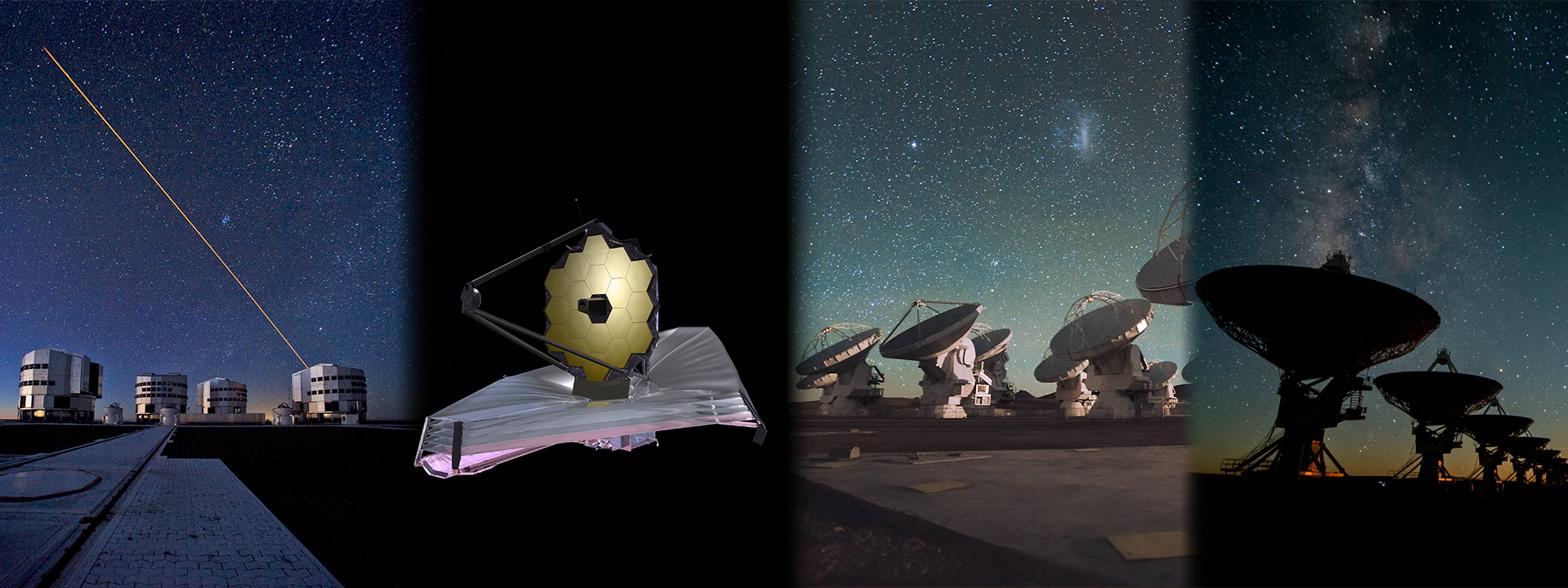Four Telescopes for the Price of One
The ALMA observatory is pleased to announce that it has entered into Joint Proposal agreements with the Space Telescope Science Institute (STScI) for the James Web Space Telescope (JWST), the European Southern Observatory (ESO) for the Very Large Telescope (VLT), and the National Radio Astronomy Observatory (NRAO) for the Karl G. Jansky Very Large Array (VLA). Thanks to these agreements astronomers can submit a single proposal to ALMA and get observation time in up to four telescopes.
“This is a new service to encourage more ambitious scientific projects that go beyond the capabilities of an individual observatory,” explains Sergio Martin, who led from ALMA the Joint Proposals project. By submitting a single proposal to ALMA, astronomers will be able to observe with up to four observatories.
Joint Proposals are dedicated to scientific projects that require observations in two or more observatories to achieve their goals. A Joint Proposal is submitted to a single observatory for scientific peer review, which allows to award observing time on multiple telescopes. Therefore, Principal Investigators no longer need to submit separate proposals to each observatory, saving time in preparing proposals and avoiding “double jeopardy” since the proposal is reviewed just once.
“Many astronomical problems require observing the same objects across the electromagnetic spectrum,” says María Díaz Trigo, ALMA Program Scientist at ESO. “These joint proposals between ALMA and ESO’s Very Large Telescope (and its interferometer) will enable astronomers to look, for instance, at hot and cold material in close vicinities, such as when stars interact with their environment,” she explains.3
For each cycle starting in Cycle 10, ALMA will be able to allocate up to 115 hours of JWST time, up to 50 hours on the VLT, and up to 5% of the available time on the VLA.
“At the VLA, we are pleased to offer the astronomical community the opportunity to request time on two of the world’s leading radio telescopes in one proposal to do new and innovative science projects that require both facilities. I am certain the new program will enable exciting science and discoveries,” celebrates Patricia Henning, Assistant Director for New Mexico Operations at NRAO.
The STScI Associate Director for Science, Neill Reid, adds: “the community has enjoyed a scientifically productive partnership between Hubble and NRAO over the past decade. We’re excited that the JWST partnership is extended to include ALMA since there are powerful scientific synergies spanning everything from planet formation to the early Universe.”
Similarly, JWST will be able to allocate up to 115 hours of ALMA time (on each of the 12-m, 7-m, and Total Power Arrays) per cycle starting with JWST Cycle 2 (with the call for proposals released in November 2022). The VLA and VLT will each be able to allocate up to 50 hours of ALMA time per year starting with Semester 2023B for the VLA (with the call for proposals released in January 2023) and Period 112 for the VLT (with the call for proposals released in February 2023).
Philip Appleton, an astronomer and senior scientist at Caltech’s Infrared Processing and Analysis Center (IPAC), said, “The joint agreement is an excellent chance for astronomers to take advantage of the incredible opportunity to combine the sub-arcsec resolution of JWST with the amazing power of ALMA for detecting dust and molecules on similar spatial scales.”
More details on how to apply for Joint Proposals will be provided in announcements by each observatory. Any questions on Joint Proposals can be directed to the ALMA Helpdesk.

